Overview
802.11ax, also known as High Efficiency Wireless (HEW), aims to increase the average user throughput by at least 4 times in a dense user environment, a goal that is challenging. This new standard focuses on implementation mechanisms designed to provide a consistent, reliable data flow (average throughput) to more users in a multi-user environment. This article will explore emerging mechanisms to make the popular 802.11ax standard an efficient wireless title.
Improve user throughput in a dense user environment 1 IntroductionIn 2015, the famous car manufacturer Ferrari released a new version of the entry-level model: the Ferrari California T. This stylish sports car is equipped with a 3.9-liter turbocharged V8 engine that can generate more than 412 kilowatts (553 horsepower) of power. Accelerating from zero to 100 km/h (0 to 62 mph) in 3.6 seconds is a miracle in the engineering world. [1]
Ferrari's designers have taken into account many details of the engine, body and interior, making this vehicle a everyday model while providing the most precise handling, fluid motion and performance at an incredible speed. This great design will greatly reduce the time to go to work every day. However, how can a red Ferrari convertible work in crowded traffic that stops in most cities for most of the time?
Many people today find themselves in this situation. Driving an Italian sports car may not be a privilege, but it can enjoy a fast wireless link. The first 802.11b Wi-Fi standard (1999) has a maximum link rate of 11 Mbps. This is a good start, but significantly slower than wired connections. A few years later, with the advent of Orthogonal Frequency Division Multiplexing (OFDM) technology, the 802.11a/g standard (2003) increased the speed to 54 Mbps.
The next link speed increase is attributed to 802.11n (2009), which provides users with a single-stream link of up to 150 Mbps. The 802.11ac standard (2013) provides a wider channel (160 MHz) and higher order modulation (256-QAM), making it possible to achieve a link speed of 866 Mbps for a single spatial stream. If the specified maximum of 8 spatial streams is used, the maximum speed of this engineering miracle will theoretically reach 6.97 Gbps. In theory, the use of 802.11ac is equivalent to replacing a bicycle with a Ferrari with enhanced horsepower, or even replacing a family car.
However, speeds approaching 7 Gbps may only be achieved in a controlled run-to-environment environment of the RF lab. In fact, when users view emails on public Wi-Fi at busy airport terminals, data traffic is often frustrating. The IEEE 802.11 wireless LAN standard, 802.11ax, is a new revision to improve this situation.
802.11ax, also known as High Efficiency Wireless (HEW), aims to increase the average user throughput by at least 4 times in a dense user environment, a goal that is challenging. This new standard provides raw link speeds beyond 802.11ac and enables multiple mechanisms to provide consistent and reliable data throughput for more users in a crowded wireless environment.
2 main features and applicationsEfficient wireless includes the following main features:
Efficient wireless is also available for the following target applications:
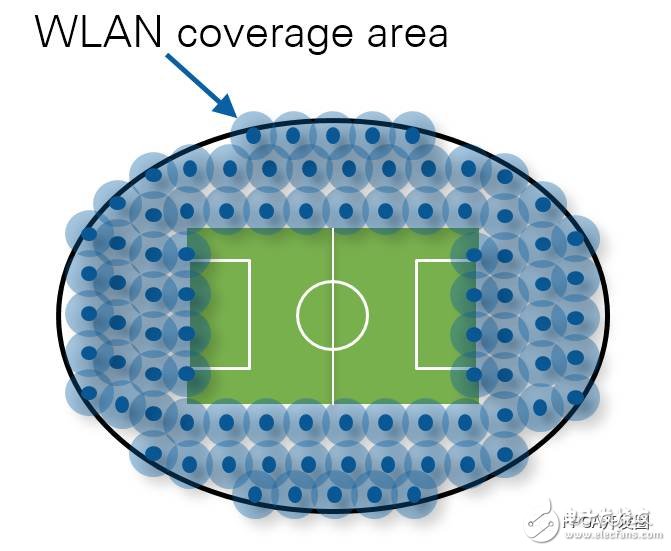
Figure 1. Examples of scenarios to be deployed by 802.11ax include stadiums with high user density and mixed environments
Backward compatible with 802.11a/b/g/n/ac
In high-density scenarios, such as train stations, airports, and stadiums, the average user throughput is increased by a factor of four.
Similar data rate and channel width as 802.11ac, but with a new modulation scheme and code set based on 1024-QAM (MCS 10 and 11).
Downlink and uplink multi-user operations are specified by MU-MIMO and Orthogonal Frequency Division Multiple Access (OFDMA) techniques.
Larger OFDM FFT (4x larger), narrower subcarrier spacing (nearly 4x), and longer symbol time (4x) to improve robustness and performance in multipath fading environments and outdoors.
Optimized traffic and channel access
Better power management for longer battery life
Mobile Data Offload: By 2020, 38.1 terabytes of Wi-Fi offload traffic will be generated each month and will continue to exceed projected monthly mobile/cellular traffic (30.6 terabytes). [2] This
It is equivalent to transmitting more than 6,000 Blu-ray movies through these networks every minute.
Environment with multiple access points and highly centralized users with heterogeneous devices (airport Wi-Fi≠home Wi-Fi)
Indoor/outdoor mixed environment
3 Wi-Fi throughput challenges in current dense environmentsThe 802.11 protocol uses the Carrier Sense Multiple Access (CSMA) method, in which wireless stations (STAs) first sense channels and only transmit signals when they sense that the channel is idle to avoid collisions. Idle means that the wireless station has not detected any 802.11 signals. When one STA detects another channel, it waits for the STA to stop transmitting within a random time period, and then monitors again whether the channel will enter an idle state. When the STA is able to transmit, they transmit the data for the entire packet.
The Wi-Fi STA can mediate access to the shared media using Request to Send/Clear to Send (RTS/CTS). The access point (AP) issues a CTS packet for only one site at a time, and in turn, the STA sends its entire frame to the AP. The STA then waits for an acknowledgment character (ACK) from the AP to indicate that the packet was received correctly. If the STA fails to receive the ACK in time, it will assume that the ACK packet collides with a packet in transit, at which point the STA will be moved into the binary exponential backoff phase. It attempts to access the media and retransmits the packet when the backoff counter expires.

Figure 2. Idle Channel Evaluation Protocol
This idle channel assessment and anti-collision protocol plays a good role in the fair sharing of channels among all participants in the collision domain, but when the number of participants increases significantly, the transmission efficiency decreases. Another factor that contributes to network inefficiency is the existence of many APs with overlapping service areas. The left diagram in Figure 3 depicts a user (User 1) subordinate to a basic service set (BSS, a group of wireless clients associated with an AP). User 1 will compete for media access rights with users in another BSS set and then exchange data with their APs. However, this user is still able to listen for traffic from the right overlapping BSS.
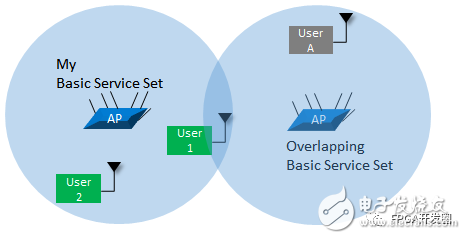
Figure 3. Inefficient media access due to overlapping BSS
In this case, traffic from the OBSS will trigger User 1's retreat procedure. This type of situation can cause users to wait longer to get transmission opportunities, greatly reducing their average data throughput.
The third factor to consider is the sharing of wider channels. For example, 802.11ac operations in North America have only one 160MHz available channel, and Europe has only two available channels.

4. Example of 802.11ax channel allocation in the 5 GHz band
Therefore, in the case where the number of channels is reduced, the planning of dense coverage becomes very difficult. In the absence of accurate and prudent power management, users will experience co-channel interference, which will degrade performance and offset most of the expected gain from wider channels. This situation is more likely to occur at the highest data rates of MCS 8, 9, 10, and 11, as this rate is more susceptible to signal-to-noise ratio. At the same time, a user using a 20 MHz channel that overlaps with an 80 MHz channel will basically cause the 80 MHz channel to be invalid. Performing 802.11ac channel sharing in a highly dense network can compromise the 80 MHz channel gain for 20 MHz channel transmission.
4 efficient PHY mechanismThe PHY change specification has brought significant changes to the physical layer of this standard. However, the specification is still backward compatible with 802.11a/b/g/n and /ac devices, so 802.11ax STAs can send or receive data with and from legacy STAs. These legacy customers are also able to demodulate and decode 802.11 ax packets (but not the entire 802.11ax packet) headers and backoffs when transmitting 802.11ax STAs. The table below highlights the most important changes in this revision of the 802.11ax standard by comparison with the implementation of the current 802.11ac standard.
The table below highlights the most important changes in this revision of the 802.11ax standard by comparison with the implementation of the current 802.11ac standard.
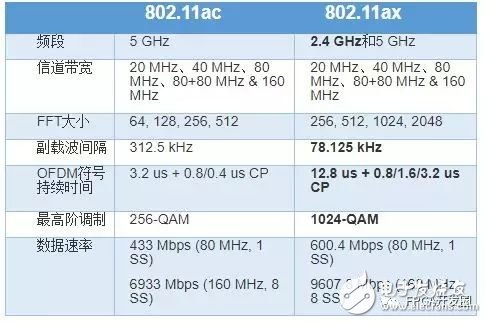
Table 1. Comparison of 802.11ac and 802.11ax
Note that the 802.11ax standard will operate at 2.4 GHz and 5 GHz bandwidth. This standard clearly defines a four times larger FFT, multiplied by the number of subcarriers. However, an important change provided by the 802.11ax standard is that the subcarrier spacing is reduced to a quarter of the subcarrier spacing in the previous 802.11 revision, while preserving the existing channel bandwidth (Figure 4).

Figure 5. Narrow subcarrier spacing
OFDM (Orthogonal Frequency Division Multiplexing) symbol duration and cyclic prefix have also increased fourfold, and the original link data rate remains the same as 802.11ac, but improves efficiency and robustness in indoor/outdoor and hybrid environments. However, this standard does specify a 1024-QAM and a lower cyclic prefix ratio in an indoor environment, which will increase the maximum data rate.
Beamforming 802.11ax will employ an explicit beamforming process similar to 802.11ac. In this process, the beamformer initiates a channel sounding procedure using null data packets. The beamformer measures the channel and responds with a beamforming feedback frame containing a compressed feedback matrix. The beamformer uses this information to calculate the channel matrix H, which is then used to focus the RF energy to each user.
Multi-user operation: MU-MIMO and OFDMAThe 802.11ax standard has two modes of operation: Single User: In this sequential mode, the wireless STA transmits and receives one data at a time after securely accessing the medium, as described above.
Multi-user: This mode allows multiple non-AP STAs to run simultaneously. The standard further divides this model into downlink and uplink multi-user modes.
The downlink multi-user refers to data that the access point provides for multiple related wireless STAs at the same time. This feature is also included in the existing 802.11ac standard.
The uplink multi-user mode refers to the synchronous transmission of data from multiple STAs to an AP. This is a new feature of the 802.11ax standard, which was not available in any previous version of the Wi-Fi standard.
In multi-user mode of operation, the standard also specifies two ways to multiplex more users in a certain area: Multi-User MIMO and Orthogonal Frequency Division Multiple Access (OFDMA). In both approaches, the AP acts as a central controller to control various aspects of multi-user operation, similar to the multiplexing of multiple users controlled by an LTE cellular base station. 802.11ax APs can also combine MU-MIMO with OFDMA operations.
Multi-user MIMO 802.11ax devices draw on 802.11ac deployment experience and will use beamforming technology to simultaneously send packets to users in different spaces (Figure 5). In other words, the AP calculates the channel matrix for each user and simultaneously directs the beam to different users—each beam contains a specific packet for its target user. 802.11ax can support the transmission of 8 multi-user MIMO transmission packets at a time, while 802.11ac can support 4 MIMO data packets at a time. Moreover, each MU-MIMO transmission may have its own modulation and decoding set (MCS) and a different number of spatial streams. By analogy, when using MU-MIMO spatial multiplexing, the access point compares with the Ethernet switch, shrinking the collision domain from the mainframe network to a single port.
As a new function in the MU-MIMO uplink direction, the AP will initiate uplink synchronization transmission from each STA through a trigger frame. When multiple users and their data packets respond simultaneously, the AP applies the channel matrix to the received beams and separates the information contained in each uplink beam, and it may also initiate uplink multi-user transmissions to receive from all participating STAs. Beamforming feedback information (Figure 7).
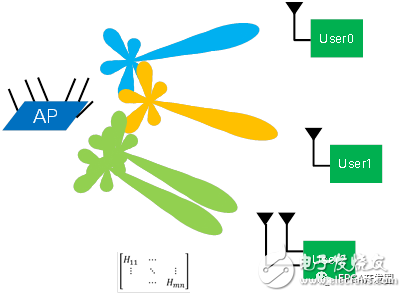
Figure 6. AP uses MU-MIMO beamforming to serve multiple users located in different spatial locations
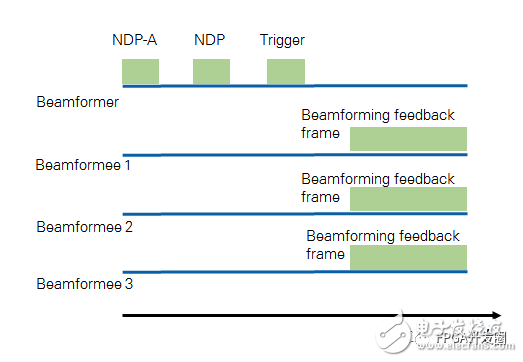
Figure 7. Channel information for beamforming AP requesting MU-MIMO operation
The multi-user OFDMA 802.11ax standard draws on technological advances in 4G cellular technology, and another technique for serving more users in the same channel bandwidth is: Orthogonal Frequency Division Multiple Access (OFDMA). Based on the existing Orthogonal Frequency Division Multiplexing (OFDM) digital modulation scheme that 802.11ac has used, the 802.11ax standard further assigns a specific set of subcarriers to individual users, ie, it will have an existing 802.11 channel (20, The 40, 80 and 160 MHz bandwidths are divided into smaller subchannels with a predefined number of subcarriers. The 802.11ax standard also borrows modern LTE terminology to refer to the smallest subchannel as a resource unit (RU) with a minimum of 26 subcarriers.
The AP decides how to allocate channels according to the communication needs of multiple users, and always allocates all available resource units in the downlink direction. It may assign the entire channel to only one user at a time - the same as 802.11ac's current functionality - or it may partition it to serve multiple users simultaneously (Figure 8).
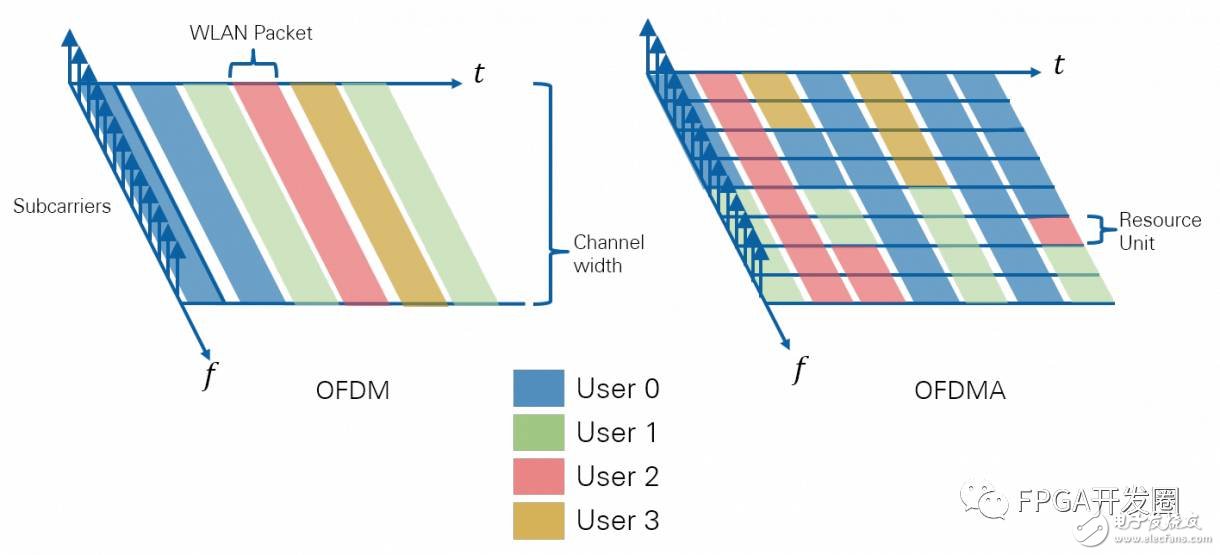
Figure 8. Single user using a channel and multiple users in the same channel using orthogonal frequency division multiple access
In a dense user environment, many users are often unable to compete for channel usage, and now Orthogonal Frequency Division Multiple Access is used more compactly - but more specific subchannels serve multiple users simultaneously, thus increasing the average for each user. Data throughput. The 802.11ax system may implement channel multiplexing through different resource unit sizes (Figure 9). Note that for every 20 MHz bandwidth, the smallest portion of the channel can accommodate 9 users. [4]
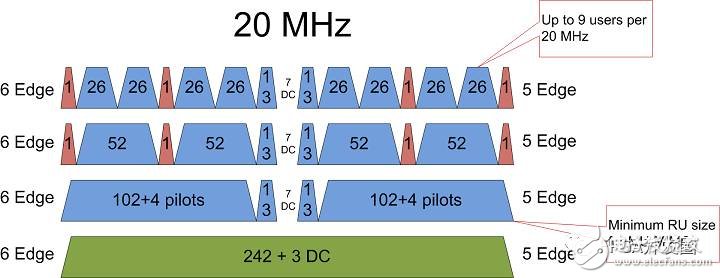


Figure 9. Segmenting Wi-Fi channels using multiple resource unit sizes
The following table shows the number of users currently able to obtain frequency multiplexed access when 802.11ax APs and STAs coordinate for MU-OFDMA operation.

Table 2. Total number of RUs with different channel bandwidths
Multi-user uplink operation In order to coordinate uplink MU-MIMO or uplink OFDMA transmission, the AP needs to send a trigger frame to all users. This frame shows the number of spatial streams and/or the OFDMA allocation (frequency and resource unit size) for each user. It also contains power control information so that individual users can increase or decrease their transmission power to evenly divide the power received by the AP from all upstream users and increase the reception of frames from more distant nodes. The AP also notifies all users of the start and end of the transmission. The AP sends a multi-user uplink trigger frame (Figure 10) to all users to indicate the exact time at which the overall transmission begins and the exact duration of each frame to ensure that each user completes the transmission at the same time. After receiving the frame from all users, the AP will return a block confirmation to the user to end the operation.

Figure 10. Coordinating upstream multi-user operations
One of the main goals of 802.11ax is to triple the current average data throughput per user in a dense user environment. Based on this goal, the standard's authors have made it clear that 802.11ax devices support downstream and upstream MU-MIMO operations, MU-OPDMA operations, or a larger number of concurrent users' MU-MIMO operations and MU-OPDMA operations.
5 efficient MAC mechanismColor Code Based Spatial Reuse In order to improve system level performance and spectrum resource usage efficiency in dense deployment scenarios, the 802.11ax standard implements space reuse technology. The STA can identify signals from overlapping basic service sets (BSS) and make media contention and interference management decisions based on this information.
When the STA that is actively listening to the media detects the 802.11ax frame, it checks the BSS color bit or the MAC address in the MAC header file. If the BSS color in the detected Protocol Data Unit (PPDU) is the same as the published color of the associated AP, the STA will treat the frame as an Intra-BSS frame.
However, if the BSS color of the detected frame is different, the STA will treat the frame as an Inter-BSS frame from the overlapping BSS. After that, the STA considers the media to be busy (BUSY) only during the period when it is required that the STA verify that the frame is an Inter-BSS frame. However, this period does not exceed the specified frame load time length.
Although the standard still needs to define certain mechanisms to ignore traffic from overlapping BSSs, implementation may include increasing the idle channel assessment signal detection (SD) threshold for Inter-BSS frames while maintaining low Intra-BSS traffic. Threshold (Figure 11). In this way, traffic from neighboring BSSs does not create unnecessary channel access rights.
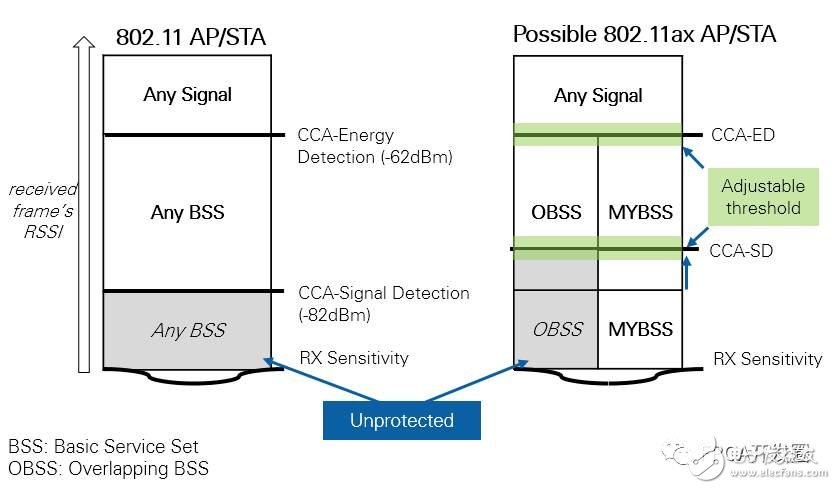
Figure 11. Idle channel evaluation using color code
When the 802.11ax STA uses a color code based CCA rule, the OBSS signal detection threshold and the transmission power control can also be adjusted. This adjustment improves system level performance and the use of spectrum resources. In addition, 802.11ax STAs can adjust CCA parameters such as energy detection level and signal detection level.
In addition to using CCA to help the current frame determine the busy state of the media, the 802.11 standard uses Network Allocation Vector (NAV) to indicate to the STA the time required for the media to transmit the current frame, and the time to wait before attempting the next transmission, NAV It is a timer mechanism that predicts future traffic. The NAV acts as a virtual carrier sense, ensuring that the media is reserved for frames that are critical to 802.11 protocol operations such as control frames, data after RTS/CTS exchange, and ACK.
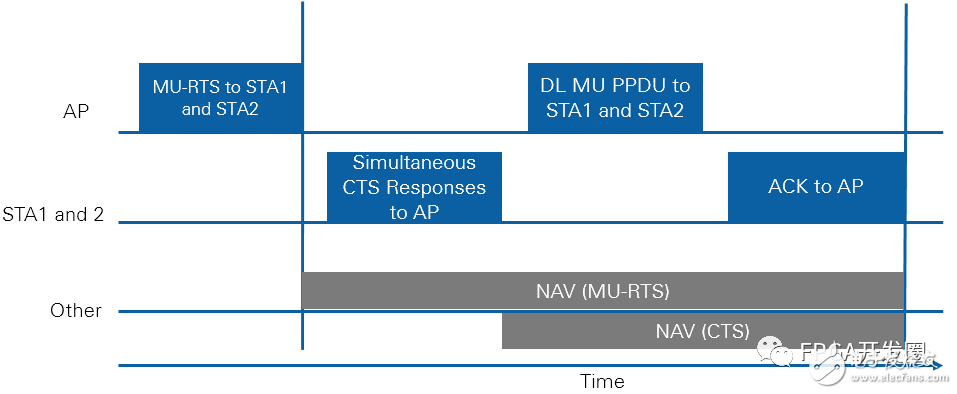
Figure 12. Example of MU PPDU Exchange and NAV Settings
The 802.11 team responsible for developing high-efficiency wireless standards may include more than one NAV field in the 802.11ax standard, and is likely to use two different NAVs. Having both Intra-BSS NAV and Inter-BSS NAV not only helps STAs predict traffic within their own BSS, but also allows them to transmit freely when they know the status of overlapping traffic.
The target wake-up time power-saving 802.11ax AP can coordinate the use of the target wake-up time (TWT) function with the participating STAs to define a specific time or set of times for individual base stations to access the media. The STA and AP exchange information, including the expected duration of the event. In this way, the AP can control the contention and overlap between STAs that need to access the media. 802.11ax STAs can use TWT to reduce energy loss and go to sleep before their own TWT. In addition, the AP can additionally set the time schedule and provide the TWT value to the STA, so that there is no need for a separate TWT protocol between the two parties. The standard refers to this process as the "broadcast target wake-up time operation" (see Figure 13).

Figure 13. Example of broadcast target wake-up time operation
6 802.11ax test challengeMore stringent EVM requirements The 802.11ax standard now requires 1024-QAM support. In addition, the subcarriers are spaced apart from each other by only 78.125 KHz. This means that 802.11ax devices require oscillators with lower phase noise and the RF front end has better linearity. Test instruments that measure DUT behavior in turn require their EVM noise floor to be significantly lower than the DUT.
The following table lists the EVM levels that a 802.11ax compliant device may have to meet.

Table 3. 802.11ax EVM requirements
The NI WLAN Test System combines the RF Vector Signal Transceiver (VST) with the NI WLAN Measurement Suite to support the generation and analysis of 802.11ax signals. The software supports waveforms from BPSK (MCS0) to 1024-QAM (MCS10 and MCS11). In addition, NI VST hardware consistently provides excellent EVM noise floor measurements for RF characterization and production test requirements.
Absolute and Relative Frequency Errors OFDMA systems have a very high sensitivity to frequency and clock skew. Therefore, 802.11ax multi-user OFDMA performance requires very strict frequency synchronization and clock offset correction. This ensures that all STAs operate accurately within their assigned subchannels, minimizing spectral leakage. In addition, strict timing requirements ensure that all STAs transmit simultaneously in response to the AP's MU trigger frame.
For 4G LTE systems, a major advantage of base stations is the use of GPS tame clocks to synchronize all relevant devices. However, 802.11ax APs may not be so extravagant, they must use their built-in oscillator as a reference clock to keep the system in sync. The STA then extracts the offset information from the trigger frame acquired by the AP to adjust its internal clock and frequency reference.
The frequency and clock offset test for 802.11ax devices will involve the following tests: Absolute Frequency Error: The DUT sends an 802.11ax frame and the test instrument measures the frequency and clock offset based on the standard reference. This will be similar to the current 802.11ac specification with a limit of approximately ±20 ppm.

Figure 14. Simple absolute frequency error measurement device
Relative Frequency Error: Used to test the ability of a non-AP STA participating in an uplink multi-user transmission to adjust its frequency to match the frequency of the AP. The testing process is divided into two steps. First, the test instrument sends a trigger frame to the DUT. The DUT adjusts its frequency and clock based on the frequency and clock information derived from the trigger frame. The DUT then responds with a frequency corrected frame. The test instrument measures the frequency error of these frames. After carrier frequency offset and timing compensation, the upper and lower limits of these errors are strictly maintained near approximately 350 Hz and ±0.4 μs (relative to the AP's trigger frame).

Figure 15. Relative frequency error measuring device
STA power control is similar to reducing frequency and clock error requirements. For all users, the power received by the AP during uplink multi-user transmission should not vary greatly. This requires the AP to control the transmit power of each STA. The AP can control using a trigger frame containing the transmit power information of each STA. Developers can test this feature in two steps, similar to the frequency error test.
Access Point Receiver Sensitivity Because the AP is used as a clock and frequency reference, there are additional challenges in testing the receiver sensitivity of an 802.11ax AP. Therefore, the test instrument must be locked to the AP before the packet is sent to the AP for packet error rate sensitivity testing.
When the AP sends a trigger frame to start, the test instrument adjusts its frequency and clock to match the AP, and then sends a predetermined number of packets in response to the AP DUT according to the expected configuration.
The challenge comes from the upper and lower limits of the strict relative frequency error of 802.11ax. The test instrument must obtain very accurate frequency and clock information from the trigger frames sent by the AP. This may require this calculation to be performed on multiple trigger frames to ensure proper frequency and clock synchronization. Therefore, this process can introduce significant delays into the test program.
One solution to the accelerated test procedure is to have the AP derive its reference clock so that the test device can lock its clock to the reference clock. This avoids the initial synchronization process based on the trigger frame, thereby reducing the AP receiver sensitivity test time.
Uplink Intra-Band Radiation When the STA is operating in the MU-OFDMA mode, it transmits a packet to the AP according to the RU assignment defined by the AP. That is, the STA only uses a part of the channel. The 802.11ax standard may specify an uplink in-band radiation test to analyze and measure the radiation generated by the transmitter when only part of the frequency allocation is used.
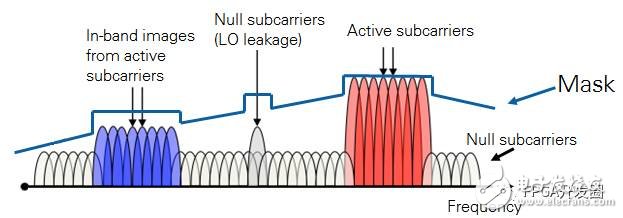
Figure 16. Partial mask for the in-band in-band radiation test
Multi-user and higher-order MIMO using MIMO to test 802.11ax devices with up to 8 antennas may yield results that are quite different from the results of testing each signal chain separately in sequence. For example, the signals of each antenna may destructively interfere with each other and affect power and EVM performance, and may have a significant adverse effect on throughput.
The test instrument must be capable of supporting sub-nanosecond synchronization of the local oscillator in each signal chain to ensure proper phase alignment and MIMO performance for multiple channels. Based on NI VST, NI test solutions enable flexible, massive MIMO configurations with up to 8, 16 or even 64 simultaneous channels using patented hardware and software technologies.
7 conclusion802.11ax is expected to increase user average data throughput by a factor of four in a dense environment. One of the most efficient drivers is multi-user technology, including MU-MIMO and MU-OFDMA. Improvements in spectrum utilization in crowded environments may make 802.11ax more acceptable to the market faster than ever before. However, achieving this capability will bring new challenges to scientists, engineers and technicians who are responsible for making these engineering miracles a reality.
NI's flexible and modular platform provides high-performance hardware with a clean oscillator low background EVM, using 1024-QAM measurement technology with a subcarrier spacing reduction of only 4x. The WLAN Measurement Suite adapts to the latest 802.11ax standards to help you design, characterize, validate and test 802.11ax devices and prepare for the multi-user revolution.
8About NI and 802.11ax standardsNI is a provider of platform-based systems dedicated to helping engineers and scientists solve the world's toughest engineering challenges. NI works with standards-setting organizations and leading semiconductor companies to develop systems and tools to design, characterize, validate, and test the latest wireless communication standards, including the IEEE 802.11ax (draft 0.1) efficient wireless draft standard.
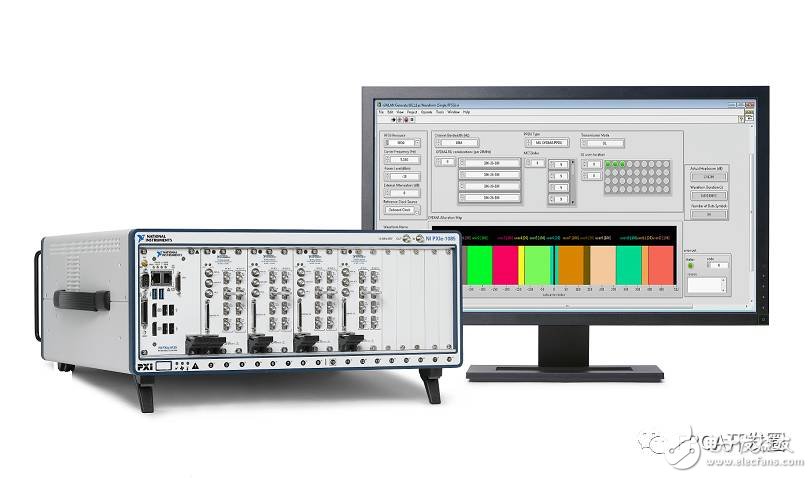
Figure 17. NI 802.11 test system based on WLAN measurement suite and VST
The combination of the NI WLAN Measurement Suite and PXI RF VST provides a powerful modular test solution for 802.11ax devices. The WLAN Measurement Suite provides researchers, engineers, and technical experts with the functionality and flexibility needed to generate and analyze various 802.11 waveforms such as 802.11a/b/g/n/j/p/ac/ah/af. As the measurement suite is specifically updated for 802.11ax, these users will be able to significantly accelerate the development of their 802.11ax devices. The software supports the main features of 802.11ax, including narrower subcarrier spacing, 1024-QAM, and multi-user orthogonal frequency division multiple access (OFDMA). The upgraded measurement kit also includes LabVIEW system design software sample code to help engineers automate WLAN measurements faster and easier.
Absolute rotary Encoder measure actual position by generating unique digital codes or bits (instead of pulses) that represent the encoder`s actual position. Single turn absolute encoders output codes that are repeated every full revolution and do not output data to indicate how many revolutions have been made. Multi-turn absolute encoders output a unique code for each shaft position through every rotation, up to 4096 revolutions. Unlike incremental encoders, absolute encoders will retain correct position even if power fails without homing at startup.
Absolute Encoder,Through Hollow Encoder,Absolute Encoder 13 Bit,14 Bit Optical Rotary Encoder
Jilin Lander Intelligent Technology Co., Ltd , https://www.jllandertech.com